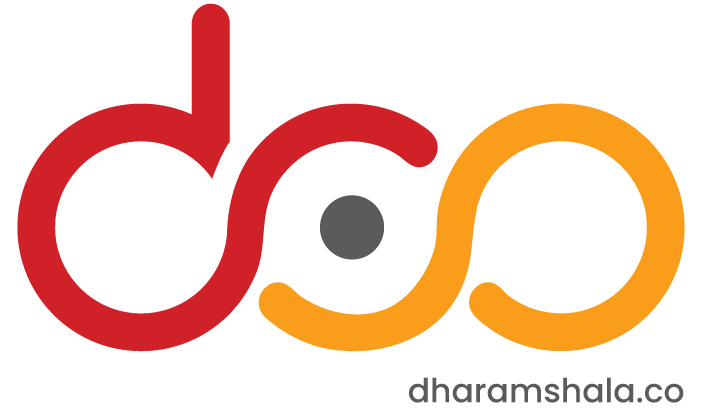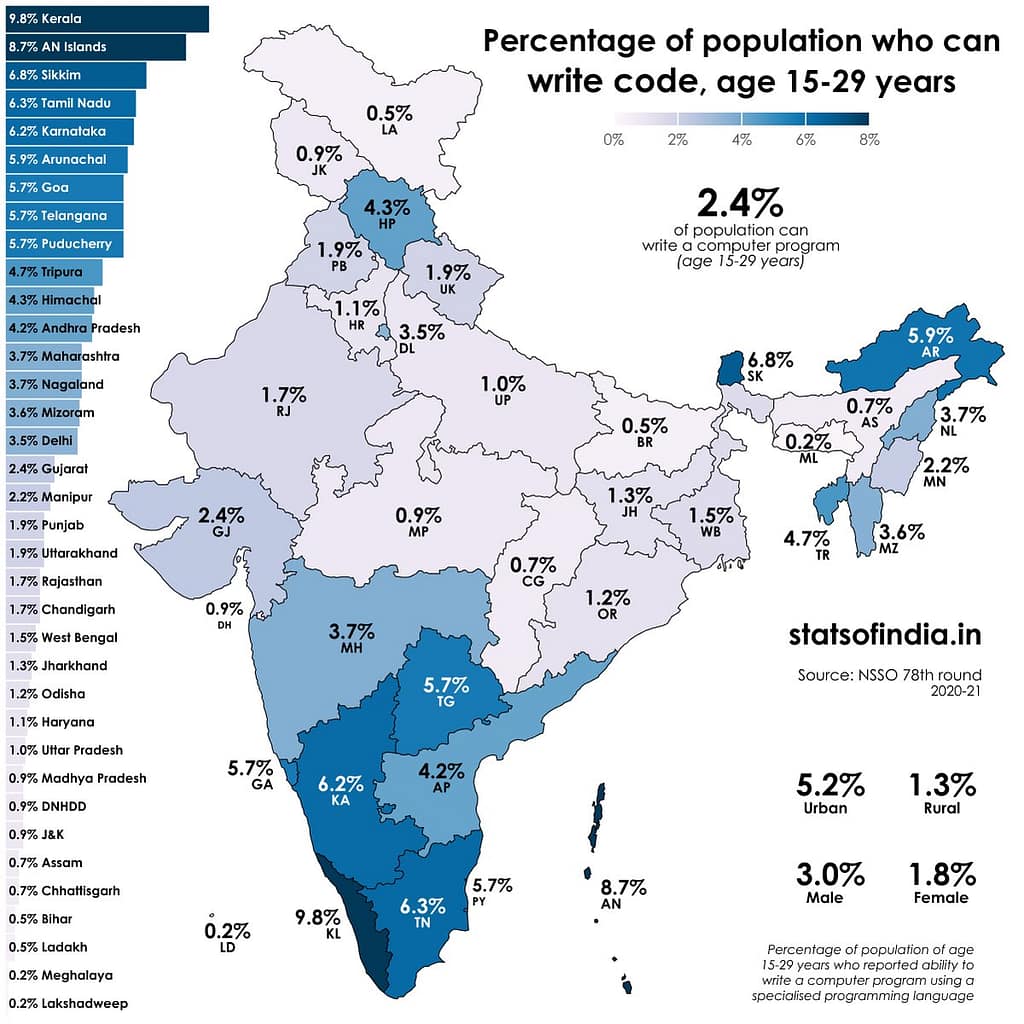In the age of digital transformation, the ability to code has become increasingly important for many professions. However, not everyone has the knowledge and skills required to write code. In India, only a small fraction of the population aged between 15 and 29 are capable of writing code. According to recent studies, only 2.4% of this age group have the necessary coding skills to succeed in today’s tech-driven job market.
Understanding the Data
The low level of tech literacy among young people in India is a cause for concern. The data shows that there is a significant gap between the demand for tech talent and the supply of skilled workers. The lack of skilled workers could hamper the growth of the tech industry in India, which is a key driver of economic growth and job creation.
Geographical Disparities
Another issue that exacerbates the shortage of skilled tech workers in India is the geographical disparities in tech literacy. Today, about ~70% of the potential talent pool in the 15-29 age group comes from only six states. These states include Karnataka, Maharashtra, Tamil Nadu, Uttar Pradesh, Andhra Pradesh, and Telangana.
The data also reveals that the level of tech literacy varies significantly across different states. States with the largest share of people between the ages of 15-29 who say they can write code include Kerala, Tamil Nadu, Karnataka, and Telangana. Kerala has the highest proportion of skilled tech workers, with 9.8% of the 15-29 age group having the ability to write code.
Urban-Rural Divide
The level of tech literacy also varies significantly between urban and rural areas. Today, in urban India, 5.2% of the population aged between 15 and 29 can write code, which is 5 times more than the proportion in rural India, which is only 1.3%. This disparity in tech literacy could lead to a digital divide, with urban areas having more access to opportunities and resources compared to rural areas.
Implications and Strategies for Improvement
The low level of tech literacy among young people in India has significant implications for the future of the country. It could lead to a shortage of skilled tech workers, which could hamper the growth of the tech industry and limit job creation. It could also widen the digital divide and create further disparities in access to opportunities and resources.
To address these issues, several strategies could be implemented. One such strategy is to integrate coding education into the school curriculum, starting from a young age. This could help young people develop a foundation of coding skills that could be built upon later in life. Additionally, initiatives could be launched to improve access to coding resources and education, especially in underserved communities.
Another strategy is to encourage entrepreneurship and innovation in the tech industry. This could create more job opportunities for young people with coding skills and help to drive economic growth in India. Additionally, providing more opportunities for practical coding experience, such as coding competitions and hackathons, could help young people develop their coding skills and gain exposure to the tech industry.
Conclusion:
In conclusion, the low level of tech literacy among young people in India is a cause for concern. The data shows that only a small fraction of the population aged between 15 and 29 have the necessary coding skills to succeed in today’s tech-driven job market.
Despite these challenges, we at Dharamshala.Co are working towards bridging the skill gap and creating more opportunities for the next generation of tech talent. By training college students with in-demand tech skills, providing them with access to experiential learning through university-employer collaboration, and preparing them for job readiness, we can ensure that the future workforce is well-equipped to take on the challenges and opportunities of the digital age.


